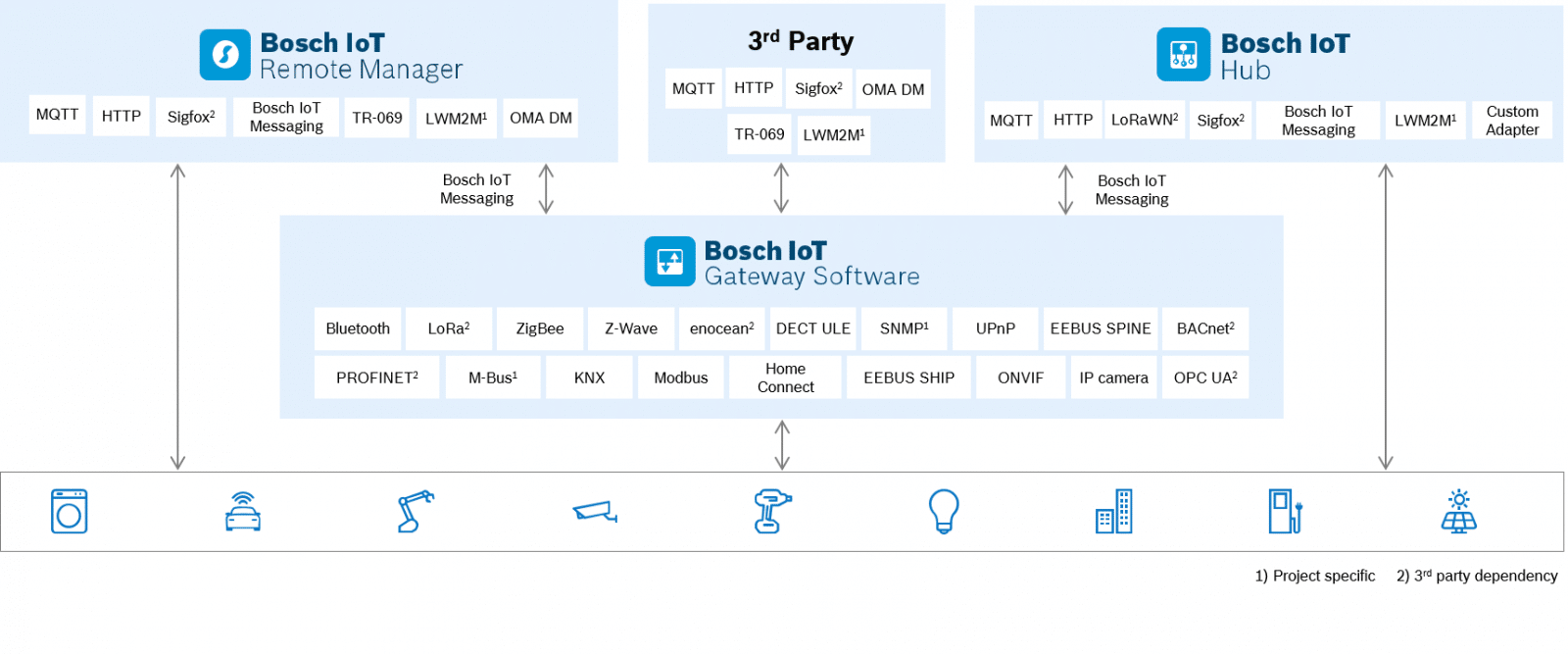In a previous article, we described the benefits of using edge computing to move the processing of IoT device data closer to the source on edge gateways. Edge computing is ideal for IoT applications that require minimal network latency, autonomous operations, and local security and privacy treatments. Edge computing can also reduce costs. The amount of data sent through networks, and stored and processed on a cloud platform decreases.
In this article, we explore the features and capabilities that need to be included in an edge computing solution. For the purpose of it we will focus on the software infrastructure that needs to be available for an edge solution. The hardware requirements are also important but not the scope of this article.
Features of an edge computing solution
- A key purpose of an edge gateway is to enable connectivity with the sensors and actuators. There are many industry protocols that facilitate different styles of device communication. An edge solution should support the most common protocols. For example, these include Z-Wave, ZigBee, KNX, Bluetooth LE, HomeConnect, Modbus, ONVIF, EnOcean, BACnet, OPC UA, LoRa, Siemens S7.
- The ability to locally run applications is the key to enable local data processing. Depending on the domain, example applications include analytics algorithms, threshold-based notifications and alarms, diagnostic and monitoring applications, and any other custom software code that is executed on the gateway.
- In addition to local processing, a gateway should have the ability to store data locally. This is key to allowing a gateway to run autonomously. The combination of local computation and local storage should allow the gateway to operate in a disconnected mode.
- Security needs to be integrated into the edge solution. An edge solution should allow for permission based access control, secure encrypted communication, certificate management and integration into existing security solutions.
- Edge gateways require a way to remotely manage and access each individual gateway. The remote management features should allow to remotely start, stop, configure, and update a gateway and the devices attached to it. An open API should allow remote applications to communicate with the gateway via REST, WebSockets, or JSON-RPC.
- Finally, the software for an edge solution should be portable to different hardware platforms. You don’t want to be in a situation where you are locked in to a specific vendor’s hardware and software solution.
OSGi for IoT solutions
Modularity and abstraction reduce complexity in the IoT. Here is why OSGi is the perfect match for IoT solutions
Read the blog postTo meet the needs, and future needs, of our customers, Bosch IoT Suite offers an edge computing solution, called Bosch IoT Gateway Software. It also offers a remote management service, called Bosch IoT Remote Manager. The edge solution is available on over 40 different hardware platforms, including Bosch hardware gateways. Bosch IoT Gateway Software can be used standalone or integrated with the Bosch IoT Suite cloud services.
 ©Bosch.IO
©Bosch.IO
If you are interested in learning more about edge computing, we have recently published a guide on how edge computing complements the cloud in IoT.
